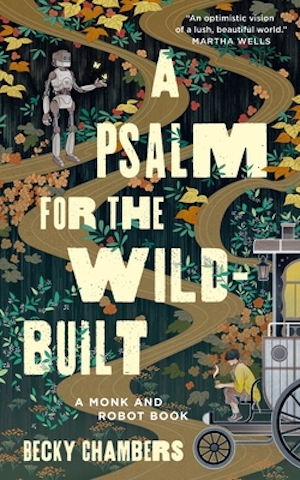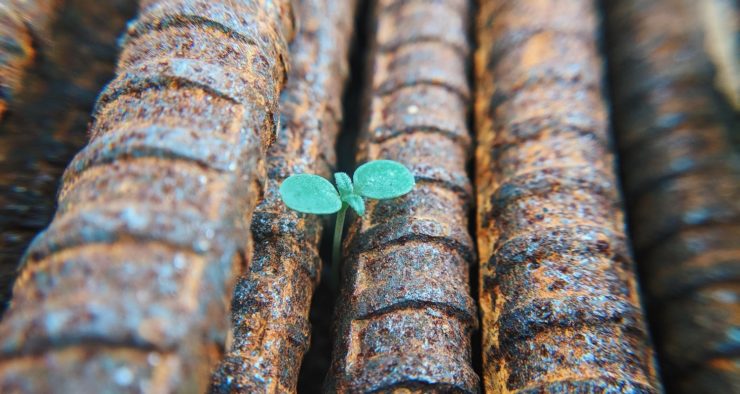When I first saw encountered the term “hopepunk,” I felt an immediate sense of recognition. To me, it described the state of joyful protest I aspire to: Knowing enough about the world to be absolutely furious, but choosing optimism anyway.
The connective tissue between the various x-punk subgenres—steampunk, cyberpunk, dieselpunk, solarpunk, etc—is the idea of social disruption, usually related to major technological shifts. But when we look at pure, unadulterated social disruption, that’s where hopepunk truly shines. Hope as resistance, hope as the antidote to apathy, hope as a motivating force to inspire action in the face of overwhelming odds.
“The opposite of grimdark is hopepunk, pass it on.”
In a July 2017 tumblr post that begins with the quote above, Alexandra Rowland, author of A Conspiracy of Truths, gave name to a trend in speculative fiction focused on community, optimism, and radical kindness: “Hopepunk says that kindness and softness doesn’t equal weakness, and that in this world of brutal cynicism and nihilism, being kind is a political act. An act of rebellion.”
I was curious about the underlying reasons behind this surge in interest for tales of hope and resilience—especially framed as resistance to the premise of “grimdark,” where people’s belief in justice and community is often viewed as a fatal flaw (looking at you, Batman). And while there are certainly various cultural factors driving this movement, it’s also helpful to look at what science can tell us about our need for hope and empathy.
We all know the narrative of the fight-or-flight instinct, the idea that our physiology responds to help us escape or defend ourselves against threats. But new research shows there are actually other stress responses that can help us to understand the positive aspects of stress and how our bodies respond to hardship.
In The Upside of Stress, Professor Kelly McGonigal highlights two lesser-known models of how we respond to stress: a “challenge” response, characteristic of artists, athletes, or surgeons (also known as a flow state); and a “tend-and-befriend” response, exemplified by nurturing behaviours and desire for connection after traumatic events.
Essentially, McGonigal explains, we actually have a much bigger toolbox with which to deal with stressful events, whether it’s the pressure of an important deadline, an immediate threat to our well-being, or an existential threat like, well, a resurgence of fascism and totalitarianism.
Studies show that stress can increase production of oxytocin, which inspires greater connection with loved ones and can make you more courageous by inhibiting the fear response. Tend-and-befriend is the behavior we observe when tragedy strikes and people feel an instinctual need to gather, feed each other, and work together on a solution or a way of coping. It’s literally Mr. Rogers’ advice to “look for the helpers” when bad things happen. It’s why the musical Come From Away, set in the aftermath of the 9/11 attacks, is such a breakout hit.
To me, hopepunk exemplifies the tend-and-befriend response. It speaks to our instinctual need for connection, our immense ability for empathy, and our pro-social nature. However, McGonigal notes that our understanding of stress is relatively new and evolving significantly. As a result, many of our predominant cultural narratives still favour the fight-or-flight response.
Buy the Book


A Psalm for the Wild-Built
What impact does this have on the stories we tell about adversity? Well, for one, it’s how we end up with tale after tale centered on superheroes who believe the solution to every problem is to punch it.
Which is fine! There’s definitely a place for this type of wishful thinking, and there’s absolutely some catharsis in imagining a simple solution to complex challenges. Just imagine if we could stab a monster and end the climate crisis (like Arya Stark, apparently)?
But with this new understanding of the psychology of stress, I looked at the stories I’ve been drawn to over the years. I grew up reading Harry Potter and Lord of the Rings, where the bonds of friendship and family are your greatest assets in the face of true evil. Others have written extensively about the proliferation of dystopian YA novels, but when I look at The Hunger Games now, I see that Katniss’ empathy is what really saves the day, assisted by her impressive survival instincts.
How do we write narratives of resilience in times of trauma? How do we cultivate empathy as an act of rebellion when all hope seems lost?
One of the first books I read that felt truly hopepunk is The Goblin Emperor by Katherine Addison (a pseudonym for Sarah Monette). A young prince assumes the throne of his estranged father with a court that despises him. His empathy and kindness are shown to be his greatest assets as he builds trust with his people and with crucial allies who share his ideas and passion.
I love how Addison allows Prince Maia’s stress to transform him in a positive way—that despite the circumstances of his childhood, he uses his position to alleviate the suffering of others by modelling empathetic leadership. Addison’s writing is infused with warmth; she shows both the good and bad outcomes of Maia’s decisions without shaming him for trusting people in the first place.
Another obvious choice for me is Good Omens, by Neil Gaiman and Terry Pratchett. In the face of the apocalypse, an angel and a demon’s millennia of friendship inspires them to choose humanity over their respective ‘sides.’ The transformative potential of empathy is a significant theme throughout the book—I particularly enjoyed the influence of Adam on the nature of his hellhound, for example.
A more recent example is Avi Silver’s Two Dark Moons, a tale of found family and nuanced destiny where Sohmeng Par must rely on reptilian monsters in order to survive after literally falling off the mountain she calls home. It’s a story where learning to see your enemies in a new, more complex way is a means to disrupt the cycle of historical trauma. It also has one of the most unique takes I’ve seen in fiction on the arbitrary assignment of gender, which is based on astrology in Sohmeng’s culture.
But aside from stories of diplomacy, empathy, and community-building, I think one of the most important elements of hopepunk is acknowledging the hard work involved in collective action. And this work isn’t always heroic or particularly visible.
L.X. Beckett’s Gamechanger, with its incredibly detailed worldbuilding, is an excellent look at large-scale societal transformation. They explain the nitty-gritty of the gamified labour market, how everyone’s basic needs are met, and the sacrifices required to make it all possible—particularly in terms of privacy and the social policing of undesirable behaviours. The protagonists benefit from highly visible acts of heroism, but the attention is actually more of a hindrance to their work.
And some of the most outstanding books I’ve read that demonstrate the value of this kind of work are Mary Robinette Kowal’s Lady Astronaut series. The Calculating Stars is one of the best examples of how the labour performed behind the scenes can be just as compelling and high-stakes as planetary threats. The characters are motivated by interpersonal relationships and values. They are fighting for their own survival and the survival of all humanity. But most of all, Kowal’s stories are centered on people who demonstrate courage even though they are hurting and afraid, because their values compel them to act.
So, let’s say you’d like to incorporate more complexity into your writing to model these beneficial outcomes of hardship. It’s helpful to cultivate an understanding of the ways our physiological responses can help or hinder your characters, especially as writing can sometimes feel like one giant stress test of our imaginary friends.
This could include highlighting your characters’ values: Why do they care so much? What are the stakes? Who would they rely on to share their fears?
Challenge yourself to think of the support work that goes into the acts of heroism in your novel, especially labour that is frequently made invisible: feeding, cleaning, clothing, training, child-rearing, etc.
We often see battles occur as a result of diplomatic failure, so imagine the high-stakes work involved in mediation and compromise. What common ground do your protagonists and antagonists share that might compel them to build bridges rather than tearing them down?
Remember that small acts of empathy can lead to life-altering shifts of perception. Remember that you’re more resilient than you think. Remember that dragons exist, but dragons can also be beaten.
Above all, be hopeful—and vote, volunteer, get involved, call your senators, and never be afraid to make your voice heard.
Originally published in March 2020.
Rebecca Diem is an author and poet of smart, hopeful speculative fiction. Her work includes the steampunk novella series Tales of the Captain Duke. Rebecca now calls Toronto home and is on a never-ending quest to find the perfect café and writing spot. You can follow her adventures on Instagram or Twitter or visit her website for more stories.










